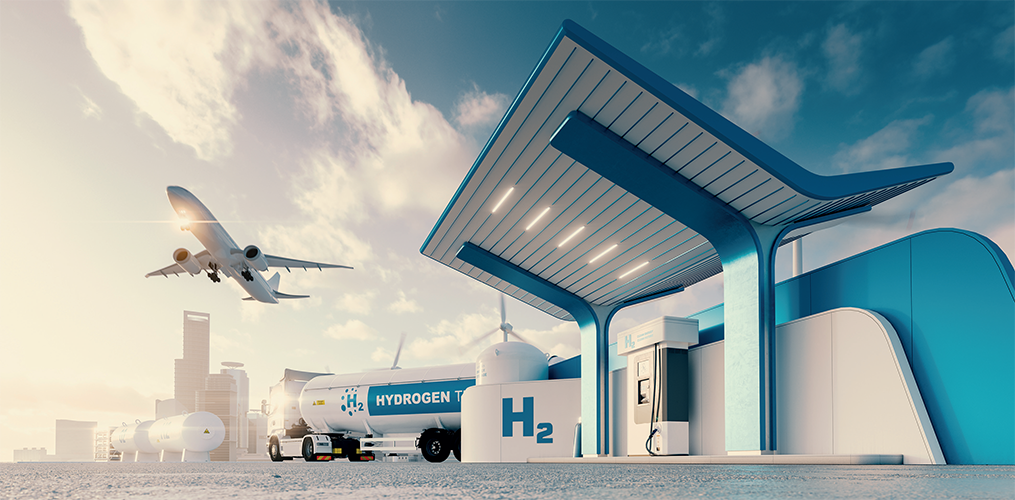
Collaborate for success
“The facts are clear: we must limit warming to 1.5C. Thanks to science, that is feasible – the technologies are already available.”
At the end of 2021 Sir Patrick Vallance spoke at COP26, making it clear that science is the solution to limiting any further damage to our fragile planet. However, the ‘pledges’ being made have unfortunately not had the desired effect on limiting global warming to 1.5C
The Climate Action Tracker (CAT) calculated the world is heading for 2.4C of warming. There is no greater time for ambition and action. We already have the innovation available that can make the difference we so sorely need. Enter hydrogen.
Science and the dedication of its experts is how we determined where we are today. The extreme changes we must make across the globe to save our planet from utter destruction. There is no more time for words, we must move to full blown action to rectify the damage that has been caused.
However, just as science has provided the information which has brought us to this moment in time it can also offer us a wealth of information to develop a plan of action moving forward.
The time is now
The innovation we need to combat climate change already exists thanks to a vast array of dedicated individuals alongside businesses pushing the envelope for the greater good. We must be bold and invest in putting these innovations into practice, not just on paper.
The International Energy Agency’s (IEA) most recent report ‘Net Zero by 2050’ tracks the progress and development of clean energy and renewable technology worldwide. It highlighted almost half the CO2 reductions required by 2050 will come from currently demonstrable technologies. It also shares the real need for major investment from public and private sectors to overcome the financial challenges we currently face scaling these types of technologies.
The benefit of working together.
Twenty-six governments including the UK announced new ‘missions’ as part of the Mission Innovation Initiative in 2021. The missions laid out, aim to accelerate innovation and be the catalyst needed to jumpstart investment. The countries involved want to work together on the development of clean technologies for cities, industry, carbon dioxide removal, and the production of renewable fuels, chemicals, and materials. Mission Innovation’s ‘innovation missions’ now cover sectors responsible for more than 50 percent of global emissions. These include transitioning cities across the world where energy consumption is the highest and most concentrated to adopt clean energy technologies with 50 ‘blueprint’ cities planned globally. The initiative is also focused on hard to abate sectors such as chemicals, steel, and cement, where we need to see a real push on making low-carbon materials and industrial technologies affordable.
Part of the COP 26 legacy saw the UK COP Presidency along with Italy forming a global partnership, leveraging the power of science and innovation to address key challenges blocking the path to a Net Zero future. Bringing together countries from across the world and pooling the scientific expertise they have to offer aim to bring a different voice to policy making which could hopefully bring down the barriers around specific Net Zero challenges. Whether the approach of this partnership will allow us to completely move these roadblocks out of the way is yet to be determined but where science can provide us with the insight to make adaptations, policy must give us the room to implement them.
Why hydrogen?
Hydrogen is one of the innovations that requires our investment, research and development. There are a number of areas where it has already been identified as an optimal clean energy solution but it is time to scale – now. We must move from demonstration to fully operational by the end of this decade. The initiative has talked about a huge drive towards decarbonizing hydrogen production and making it accessible as a clean energy solution across sectors. This can only happen by investing in infrastructure, its associated technologies and carrying on research into improving efficiency.
Where is the silver bullet?
Sadly, there is no ‘silver bullet’ technology, no single piece of science or a single country that can deliver a solution to climate change and limit global warming to the point where we can live sustainably. The positive news is that by working together and sharing the information and solutions we have at our fingertips, we can move forward. The resources and the development of innovative solutions are already there for us to benefit from. A collaborative approach across industry and government globally will give us a fighting chance for a clean and stable future.
 DR TOM MASON
DR TOM MASON
Dr Tom Mason, CEO & CTO at Bramble Energy, is an experienced engineer with a demonstrated history of developing and commercializing novel high-impact technologies with a global reach. Bramble Energy is powering a Net Zero world – today – and is proving to be a real game changer in solving key challenges in the production of hydrogen fuel cells including: lead times, up-front investment, manufacturing cost and scalability.Bramble Energy, through revolutionary fuel cell design and manufacturing techniques, has developed the unique printed circuit board (PCB) fuel cell – the PCBFC™. This is a patent protected fuel cell that can be manufactured in almost all printed circuit board (PCB) factories worldwide.
For further information please visit: https://www.brambleenergy.com/